Practical Aromatherapy: Essential Oils for Healthy Kids
Busy parents are always on the lookout for natural, effective alternatives to support their children’s health and happiness. Invoking gentle calm in an otherwise hectic family life is especially appreciated. Essential oils can offer this support in a fun, safe and natural way. A few essential oils are particularly suitable for use with young ones, both for bringing soothing emotional calm and contentment healing the small wounds of childhood – here’s a quick primer to help you safely and effectively use five valuable essential oils with children.
There are several easy methods to utilize natural essential oils with children. These include topical application via caring touch massage; direct application to wounds; inhalation from cloth (like clothing or a pillowcase); room sprays and diffusers; and the all-purpose aromatherapy bath. The key difference in using essential oils with children, compared to adults, is that children will need smaller amounts of oil for the same effect. There are a few oils that shouldn’t be used with children; peppermint, most eucalyptus varieties, and red thyme, for example, are considered too strong. If in doubt about any oil consult a knowledgeable practitioner or reputable text.
Also, the younger the child, the more dilute the concentration of essential oils should be in a formula, bath, or inhalation application. Massage formulas, for example, can contain approximately 1 drop essential oil per ounce of carrier oil for each year of age – this is flexible depending on the oil and the situation, within a range of 3 drops for each year (i.e. For children one and under, up to 4 drops can be used with gentle oils such as Vanilla, Lavender and Chamomile – use only 1 or two drops with newborns). The child’s weight can also be considered; if a child is larger for their age, a little more essential oil can be used. If using a diffuser, only enough oil so that the scent can be detected is necessary – nebulizing diffusers may output too high a concentration of oils for children; warming or humidifying diffusers are more appropriate. The oils we’ll look at here are all quite safe and can be used as often as feels appropriate; Tea Tree, though, should be reserved just for its potent antiseptic applications.
And now for the oils! We’ll start with soothing the very little ones; comforting an infant can seem a full-time job for many parents, where support is always welcome. For this, there’s one indispensable tool: pure Vanilla essential oil. Mmmm! Who doesn’t like vanilla? Infants really respond to its calming, sweet scent. And it’s so easy to use. A belly, back or foot rub with a blend containing 1/2 percent vanilla in any quality carrier oil (jojoba, hazelnut or other seed or nut oil of your choice) works magic for many parents. To make a 1/2 percent Vanilla blend, purchase a small amount of pure Vanilla essential oil and add 4 drops into each ounce of carrier. Use as frequently as you like, as vanilla is completely non-toxic. You can even add a few drops to your favorite cookie recipe for an exquisite flavor, far surpassing that of the commonly found vanilla extracts.
Another highly regarded oil for relieving stressful moments is Roman Chamomile. Its sweet herbaceous aroma is also very gentle, being noted particularly useful to calm tantrums or soothe after nightmares. A drop or two of Chamomile can be massaged undiluted into the solar plexus for quick effect. For an aromatic bath, first blend the appropriate number of drops as noted above into one tablespoon of carrier oil. Add this to the bathwater after the bath is drawn to best retain the aroma (otherwise it may all evaporate as the tub is filling). Chamomile (and Lavender) makes a great room spray; just add 5-10 drops per cup of water in a spray bottle, shake well then mist the air.
True Lavender essential oil (Lavendula angusitifolia) is wonderful for its soothing effects as well, along with a great variety of other healing actions. It is an excellent remedy for small burns, applied directly to the area, undiluted. For small cuts and scrapes, Lavender may be used alone, or in a 50/50 blend with Tea Tree for added antiseptic properties. Lavender supports sleep, and is an excellent choice for diffusing in the evening time. Lavender may also be used in a bath, and is the first choice for a gentle foot rub. For a good night’s rest, blend 2 to 1 with Roman Chamomile, diluting as needed depending on the child and application method.
For brightening sour moods, the aromas of sweet citrus oils are unmatched. Children especially enjoy Tangerine; Mandarin (a Tangerine variety) has an additional calming action not found in any other essential oil. Mandarin oil is either cold-pressed from the peels of the fruit, or steam distilled from the leaves of the tree (known as Mandarin Petitgrain). The cold pressed oil is excellent for aromatic use (in a diffuser or room spray), and the steam distilled variety is recommended for baths and in body oil blends. Care should be taken with using any cold pressed citrus essential oil on the skin, as they will make the skin more sensitive to UV rays for the following day or two where it has been applied. Citrus oils should not be avoided for this reason, just consider if your child will be bundled up in the darker days of winter, or building sand castles at the beach!
Finally, there’s Tea Tree essential oil. Tea Tree is considered a universal antiseptic, replacing that stinging Iodine solution that grandmother always seemed to have on hand. Tea Tree oil can still be a little strong for the younger ones if applied directly; blend with Lavender as noted above for these cases. A few drops of the Tea Tree and Lavender blend can be added to a warm bowl of water for an effective, soothing wash for cuts and scrapes. Also, a natural antiseptic spray can be mixed and used as needed. Use two ounce of pure water and one half ounce of rubbing alcohol. To this, add 8 drops each of Chamomile and Lavender, plus 12 drops Tea Tree; shake before each use. Tea Tree has a great many additional uses, and like Lavender, is useful to always keep on hand.
This is just a brief look at how you can easily incorporate the wonderful healing potential of essential oils into your child’s natural health and wellness program. There are many, many essential oils available with an array of healthful effects and pleasant scents. A note about essential oil quality: consider spending a little bit more on your oils, rather than going for the least expensive available. The oil’s aroma, and its therapeutic value, may be significantly different. Try to find a company you trust, that offers consistently high quality oils; when you buy a new oil for the first time, they’re more likely to carry first-rate oils of each type. As your knowledge and experience grows, you’ll find there are aromatherapy remedies for most common childhood ailments. There are many fine books on aromatherapy available, often with several chapters devoted to using essential oils with children. Most importantly, start slowly, be creative, and have fun; aromatherapy can easily become a key component in support of your family’s health and wellness.

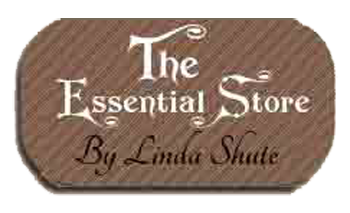


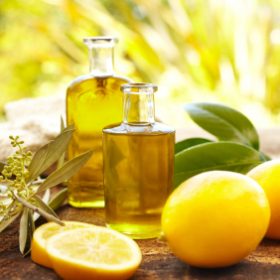
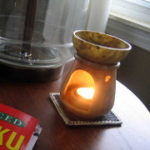
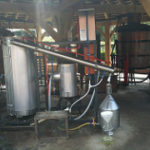
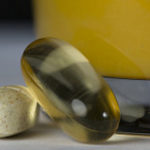
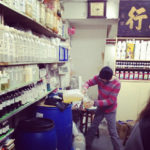

Leave a reply